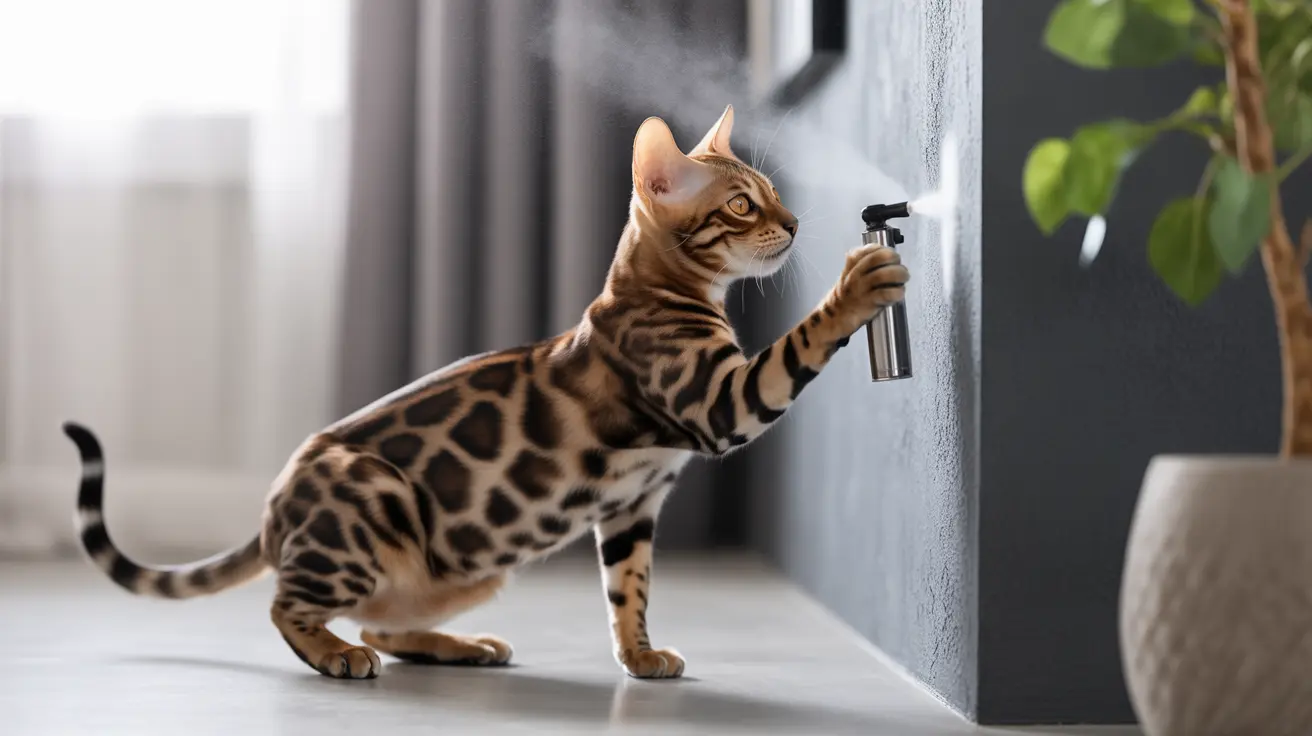If you've ever encountered cat spray, you know it's an unmistakable and often overwhelming odor that's distinctly different from regular cat urine. This pungent scent serves a specific purpose in feline communication but can become a significant concern for pet owners when it occurs inside the home.
In this comprehensive guide, we'll explore the unique characteristics of cat spray, what causes its distinctive smell, and how to identify and address this common feline behavior.
The Unique Characteristics of Cat Spray
Cat spray has a sharp, pungent aroma that's often described as a combination of powerful ammonia and musky undertones. This potent smell is significantly more concentrated than regular cat urine, thanks to additional chemical compounds including pheromones and fatty acids that cats use for territorial marking.
The scent is particularly intense because it contains specific proteins, such as cauxin, which contribute to its powerful and persistent nature. Unneutered male cats typically produce the strongest-smelling spray due to their higher levels of hormones and pheromones.
Chemical Composition Behind the Smell
The distinctive odor of cat spray comes from a complex mixture of compounds:
- Concentrated urine
- Pheromones for communication
- Fatty acids
- Proteins (including cauxin)
- Volatile organic compounds (VOCs)
These components work together to create a long-lasting scent marker that other cats can detect for weeks or even months if not properly cleaned.
Why Cats Use Spray Marking
Understanding why cats spray is crucial for addressing this behavior effectively. The primary reasons include:
- Territorial marking, especially in multi-cat households
- Response to stress or environmental changes
- Mating behavior in unneutered cats
- Medical issues requiring veterinary attention
How to Identify Cat Spray
Cat spray can be distinguished from regular urination by several key characteristics:
- Vertical marking on walls, furniture, or doors
- Small amounts of liquid compared to normal urination
- Extremely strong, persistent odor
- Often accompanied by backing up movements and tail quivering
Prevention and Treatment
To minimize cat spraying and its associated odor:
- Spay or neuter cats early
- Reduce environmental stressors
- Provide multiple litter boxes in multi-cat homes
- Use enzymatic cleaners specifically designed for cat spray
- Consult with a veterinarian to rule out medical issues
Frequently Asked Questions
What does cat spray smell like compared to normal cat urine?
Cat spray has a much more concentrated, pungent odor than normal urine, with strong ammonia-like and musky notes. It's specifically designed to be more noticeable and longer-lasting than regular urine.
Why does cat spray have such a strong and lingering odor?
The strong, persistent smell comes from concentrated pheromones, proteins, and other chemical compounds that cats use for territorial marking. These substances are specifically designed to last longer and be more noticeable than regular urine.
Can female or neutered cats also spray urine with that pungent smell?
Yes, while less common, both female and neutered cats can spray. However, the smell is typically less intense than that of unneutered male cats due to lower hormone levels.
How can I tell if my cat is spraying or just peeing outside the litter box?
Spraying typically occurs on vertical surfaces, involves small amounts of liquid, and is accompanied by specific body language like tail quivering. Regular urination occurs on horizontal surfaces and involves larger quantities of urine.
What is the best way to clean and remove the smell of cat spray effectively?
Use enzymatic cleaners specifically designed for cat spray, as these break down the proteins and chemicals causing the smell. Clean affected areas immediately and thoroughly, and ensure complete drying to prevent residual odors.
Managing cat spray starts with understanding its unique characteristics and addressing the underlying causes. Whether through behavioral modification, environmental changes, or medical intervention, there are effective solutions available to help control this challenging aspect of cat ownership.






